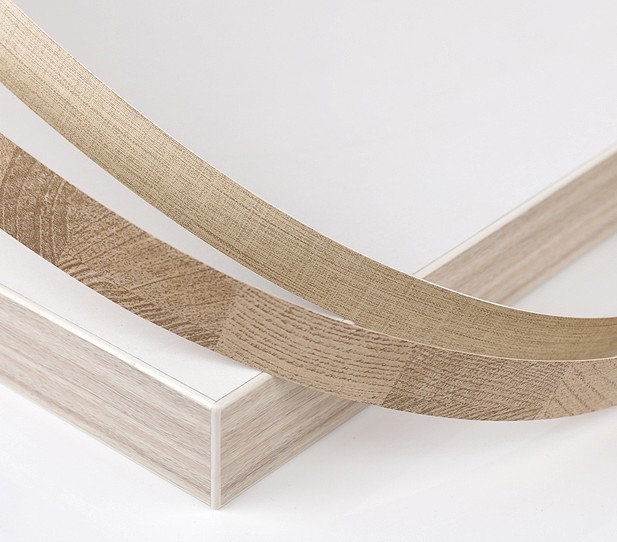|
Q&A about Edge Banding StripsI. What is the backing adhesive? Can the edge banding strip with a backing adhesive be directly adhered to the panel?
The backing adhesive (bridge agent) of PVC cannot adhere well directly to the panel. The quality of the backing adhesive (in fact, it is not glue but serves as an intermediate bridge, so it is also called a bridge agent) directly affects the bonding effect. Especially when it is cold, the temperature in the workshop is relatively low, and the efficiency of the hot melt adhesive and the backing adhesive is greatly reduced. At this time, furniture manufacturers often blame the quality of the edge banding strip. A good solution is to replace it with a high-temperature hot melt adhesive with high viscosity and purity, increase the working temperature of the hot melt adhesive, raise the room temperature, and preheat the edge banding strip (while ensuring its quality).
II. Why does the "flat" edge banding strip still need to have an arc?
The arc of the edge banding strip itself, when the edge banding strip is bonded and extruded, is to prevent the loss of glue. A good edge banding strip should have a slight inward bend in its width direction. However, inferior edge banding strips are flat or even warped upwards, so it is easy to cause poor bonding.
III. What is the material of the 3D edge banding strip?
Currently, only a few 3D edge banding strips on the market are acrylic products (composed of acrylic and some additives, with the acrylic ratio being about 98%), while others are transparent PVC. The problem with transparent PVC is that after trimming and edging, the transparency of its edge will be slightly worse, and thus it cannot fully achieve the 3D effect.
|


